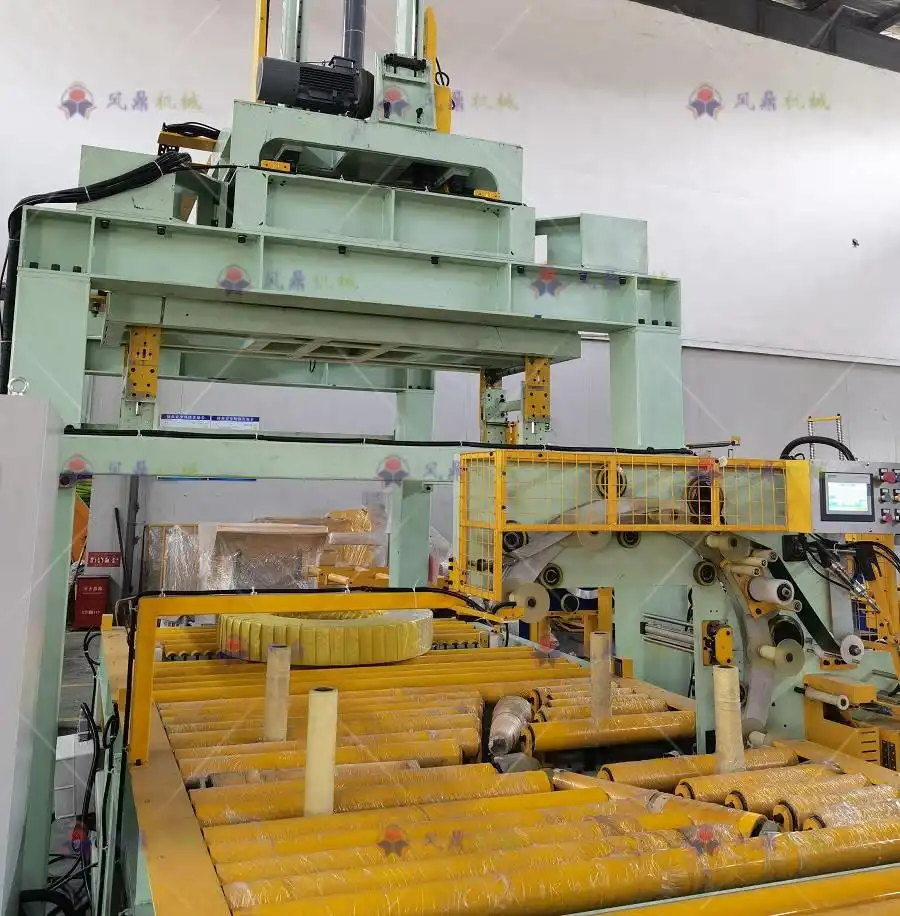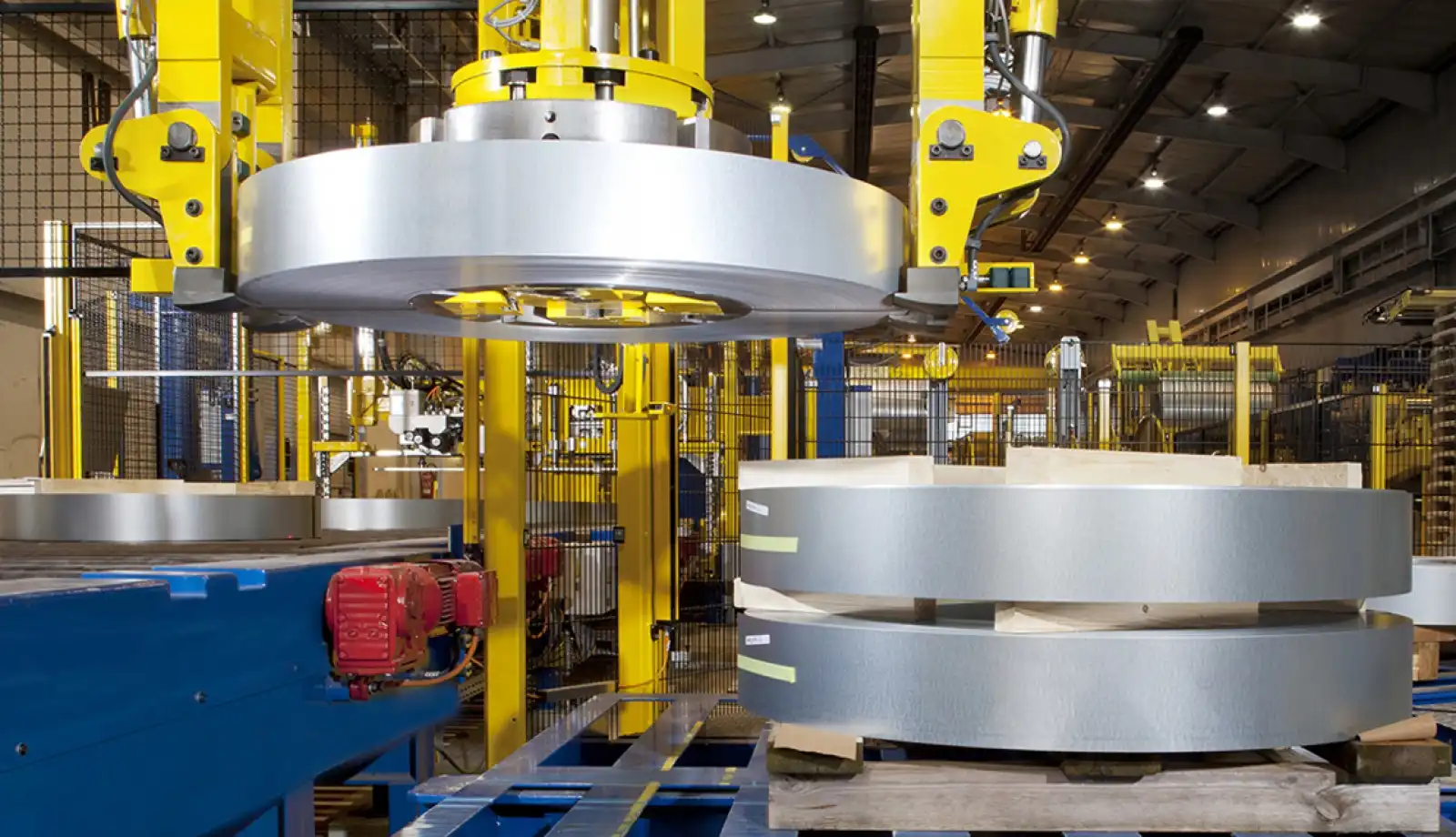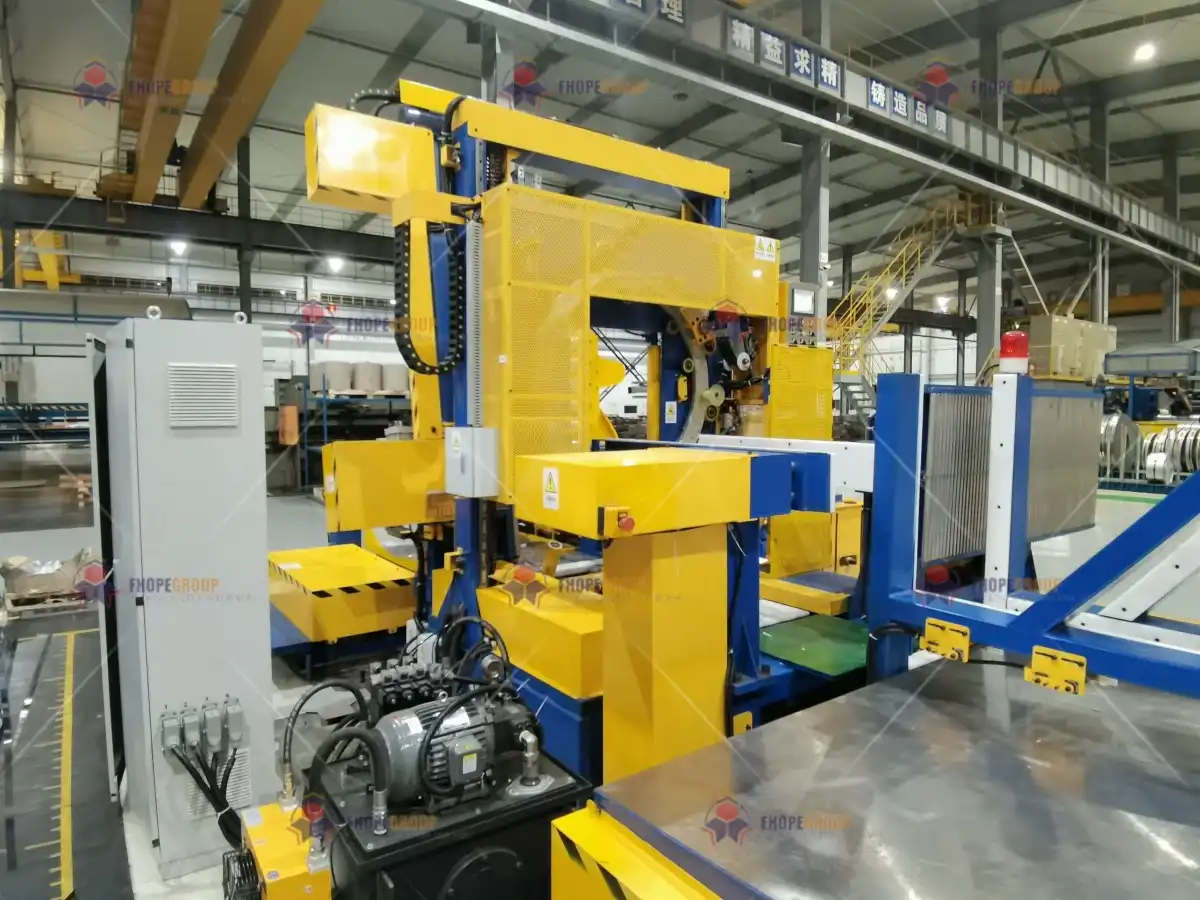I've spent my entire career in the packing machine industry. I started on the factory floor and eventually built my own company, SHJLPACK. Along the way, I’ve seen many steel mills struggle with the same problem: their packaging line is a major bottleneck. It’s slow, it’s unsafe, and it costs them money every single day. You might be seeing this in your own plant. The pressure to produce more, with less cost and higher quality, is intense. This pressure is especially strong in competitive markets like Spain. Many factory owners feel stuck, believing a full overhaul is too complex or expensive.
The packaging evolution in Spanish factories is a strategic move from labor-intensive manual wrapping to fully integrated, data-driven automated systems. This transition is not just about buying a new machine. It is about fundamentally changing the process to increase speed, improve worker safety, guarantee consistent quality, and cut operational costs. This evolution is essential for steel mills to remain competitive and profitable in today's demanding market.

As the CEO of SHJLPACK, my goal is to share what I've learned. I want to make this knowledge accessible to everyone, from engineers to factory owners. I achieved my own success in this industry, and now I want to help others do the same. This evolution from manual to automatic isn't just a trend I've observed; it's a transformation I've helped my clients navigate time and time again. Let’s break down the journey, step by step, and explore how Spanish factories are leading the way.
Why are traditional manual wrapping methods failing in modern Spanish steel mills?
Is your packaging area still relying heavily on manual labor to wrap heavy steel coils? You probably know the risks. It’s a slow process that holds up your entire production line. Worse, it’s a dangerous job, and a single accident can have devastating consequences for your team and your business. The inconsistency of manual wrapping can lead to damaged products and unhappy customers. It feels like you're pouring resources into a process that constantly underdelivers and puts your people at risk.
Traditional manual wrapping methods are failing because they cannot meet the modern demands for speed, safety, and quality. These methods are prone to human error, which results in inconsistent wrap tension and material waste. They also create a significant safety hazard for workers who handle heavy coils and equipment. In a high-volume production environment, these manual processes become a major bottleneck, limiting overall factory output and profitability.

Deconstructing the Failure of Manual Systems
When I visit steel mills that still rely on manual packaging, I see the same problems everywhere. The issues go much deeper than just being "slow." They represent fundamental flaws that are incompatible with the goals of a modern, efficient factory. As an engineer, I like to break problems down into their core components. Let's look at why these old methods are truly obsolete.
The Hidden Financial Drain
Many owners focus on the direct labor cost, but that's only the tip of the iceberg. The true cost of manual wrapping is much higher. Think about worker turnover. It's a physically demanding and repetitive job, leading to high burnout rates. This means you are constantly spending money on hiring and training new employees. Then there's the cost of workplace accidents. Insurance premiums, downtime, and potential legal fees can cripple a budget. I remember a client in Spain who was hesitant to invest in automation. A serious injury on his packaging line changed his mind overnight. The cost of that single incident was more than half the price of a semi-automatic wrapper.
The Inconsistency and Waste Problem
A machine applies the same tension and the same amount of film every single time. A human cannot. Even your best workers will have variations from the beginning of their shift to the end. This inconsistency leads to two major problems. First, improperly wrapped coils are more susceptible to damage during transport and storage from moisture or physical impact. This leads to customer complaints and returns. Second, workers often over-wrap "just to be safe," which wastes a huge amount of expensive packaging material over the course of a year. An automated system is calibrated to use the precise amount of material needed, no more and no less.
| Metric | Manual Wrapping | Automated Wrapping | Impact |
|---|---|---|---|
| Cycle Time / Coil | 10-15 minutes | 1-2 minutes | 5-10x Increase in Throughput |
| Labor Requirement | 2-3 Workers | 1 Supervisor | 80% Reduction in Labor Costs |
| Material Waste | 15-25% Overuse | < 2% Variation | Significant Consumable Savings |
| Safety Incidents | High Risk | Minimal Risk | Lower Insurance, Higher Morale |
| Quality Consistency | Low | High | Fewer Customer Complaints |
This table clearly shows that manual wrapping isn't just inefficient; it's a liability. It actively works against the goals of high productivity, cost control, and quality assurance that leaders like you are trying to achieve. Recognizing this is the first crucial step in the evolution.
What are the immediate ROI benefits of semi-automatic coil wrapping systems?
You understand the problems with manual wrapping, but the idea of a massive, fully automated line seems daunting. The capital investment feels too high, and the potential disruption to your operations is a major concern. So you wait. But every day you wait, the hidden costs of your manual process continue to add up. You're losing money to inefficiency, material waste, and potential safety issues. The cost of doing nothing is very real.
The immediate return on investment (ROI) from a semi-automatic coil wrapping system is driven by sharp cuts in labor costs and a significant reduction in packaging material waste. These machines also increase throughput by speeding up the wrapping cycle. With a moderate initial investment, a semi-automatic wrapper typically pays for itself within 12 to 24 months by directly improving operational efficiency and product protection.

Calculating Your Path to Profitability
A semi-automatic system is the perfect bridge. It provides a tangible, quick win that builds momentum for future upgrades. It’s not just about spending money on equipment; it’s about making a strategic investment that starts paying you back from day one. I've walked many factory owners through this exact analysis. Let's look at the numbers.
A Simple Framework for ROI Calculation
You don't need a complex financial model to see the benefits. We can build a simple case.
First, identify your current costs. How many workers are on your packaging line per shift? What are their total wages, including benefits? Let's say you have two workers at a cost of $4,000 per month each. That's $8,000 per month in direct labor. A semi-automatic wrapper only requires one operator to place the coil and start the machine. This immediately cuts your labor cost in half to $4,000 per month, saving you $48,000 per year.
Next, look at material savings. I often ask clients to weigh their packaging film waste for one week. The results are always shocking. With manual wrapping, overuse can easily be 20%. A semi-automatic wrapper with a powered pre-stretch system can stretch the film by 200-300%. This means one meter of film becomes three or four meters. This feature alone can cut your film consumption by 50-70%. If you spend $5,000 per month on film, a 50% reduction saves you another $30,000 per year.
| Investment & Savings | Calculation | Annual Impact |
|---|---|---|
| Initial Investment | (Example Cost of Semi-Auto Wrapper) | -$50,000 |
| Annual Labor Savings | ($4,000/month * 12 months) | +$48,000 |
| Annual Material Savings | ($2,500/month * 12 months) | +$30,000 |
| Total Annual Savings | $48,000 + $30,000 | +$78,000 |
| Payback Period | $50,000 / ($78,000 / 12) | ~7.7 Months |
Beyond the Numbers: The Qualitative ROI
The payback calculation is compelling, but the benefits don't stop there. A consistently and securely wrapped coil is a protected coil. This means fewer products are damaged during shipping. You'll spend less time and money dealing with customer complaints, returns, and remanufacturing orders. This improves your reputation as a reliable supplier. Furthermore, by moving your team from heavy manual labor to machine operation, you improve workplace safety and morale. This is an investment in your people and your brand, and the returns, while harder to quantify, are just as important.
How does full automation transform the entire packaging line beyond just wrapping?
You've installed a semi-automatic wrapper and seen the benefits. Your wrapping is faster and more consistent. But you notice the process is still disjointed. An operator still needs to use a crane to load the coil, another person has to move it to the strapping area, and someone else handles labeling and palletizing. Each handover is a potential delay and a point of failure. You have islands of efficiency in a sea of manual handling.
Full automation transforms the packaging line by creating a single, integrated system that handles the entire process from end to end. It goes far beyond just wrapping. It incorporates automated coil loading, conveying, weighing, strapping, labeling, and palletizing into a continuous, synchronized flow. This holistic approach eliminates almost all manual intervention, which maximizes throughput and creates a unified data stream for the entire packaging operation.

From Disconnected Steps to a Seamless System
This is where my work as an engineer gets really exciting. Designing a fully automated line is like conducting an orchestra. Every component must work in perfect harmony. It’s the ultimate solution for a forward-thinking CEO who wants to maximize efficiency and control. This is the path many of the most advanced Spanish factories are now taking.
The Core Components of a Fully Automated Line
A fully automated line is a system of systems. It starts the moment a coil comes off the slitter or out of the annealing furnace.
- Automated Conveying: Instead of cranes and forklifts, the system uses a network of powered conveyors, turnstiles, and walking beams. The coil moves automatically from one station to the next. This is safer, faster, and eliminates the "white space" or waiting time between processes.
- Integrated Stations: The wrapping machine is just one stop on the journey. Before wrapping, the coil can pass through an automated weighing and measuring station. After wrapping, it moves to an automated strapping machine that applies radial or axial straps. Then, an automated printer applies a label with a barcode and all production data. Finally, robotics can be used to stack the finished coils onto a pallet for warehousing.
- The Central "Brain": The entire line is controlled by a central PLC (Programmable Logic Controller). This controller acts as the brain, telling each machine what to do and when to do it. It ensures the entire line speeds up or slows down together, preventing collisions and maximizing flow.
| Feature | Semi-Automatic Line | Fully Automated Line | The Transformation |
|---|---|---|---|
| Coil Transport | Manual (Crane/Forklift) | Integrated Conveyors | Eliminates waiting time, improves safety |
| Process Flow | Disconnected Stations | Continuous, Synchronized Flow | Maximizes throughput, reduces bottlenecks |
| Labor | 1-2 operators per area | 1 supervisor for the whole line | Drastic reduction in labor needs |
| Control System | Individual Machine Controls | Central PLC Control | Unified operation and diagnostics |
| Data | Isolated, manual entry | Centralized, automatic capture | Enables real-time visibility and control |
When I helped a large steel service center in Valencia make this leap, the change was incredible. Their packaging hall went from a chaotic place with cranes and people moving everywhere to a quiet, orderly, and highly productive environment. The CEO told me his biggest surprise wasn't just the increased output, but the newfound sense of control he had over the entire end-of-line process. That is the true power of full automation.
What role do data and IoT play in the new generation of automated packaging lines?
Your new automated line is a marvel of mechanical efficiency. Coils are moving, wrapping, and being strapped faster than ever before. But are you getting the most out of your investment? If a machine stops, do you know why immediately? Can you predict when a motor is about to fail? Are you certain you are using the optimal amount of packaging film for each specific coil type? Without data, you have a fast system, but not necessarily a smart one. You are still reacting to problems instead of preventing them.
In new automated packaging lines, data and the Internet of Things (IoT) are the keys to unlocking peak performance. They enable real-time monitoring, predictive maintenance, and process optimization. IoT sensors embedded in the machinery collect critical data on everything from motor vibration to film consumption. This information is then analyzed to prevent downtime, minimize waste, and provide managers with the insights needed to make data-driven decisions and continuously improve Overall Equipment Effectiveness (OEE).

Transforming Machines into Intelligent Assets
For a leader like Javier, who has already implemented smart platforms in other parts of his plant, this is the final and most crucial piece of the puzzle. This is where a packaging line moves from being a cost center to a strategic, data-generating asset. This is the frontier of packaging evolution, and it’s where we at SHJLPACK focus our most advanced solutions.
From Reactive Repairs to Predictive Maintenance
The old way is to wait for something to break. The machine stops, production halts, and a maintenance team scrambles to fix it. This is costly downtime. The new way is predictive. We embed vibration and temperature sensors on critical motors and bearings. These sensors feed data to a monitoring system. The system learns the normal operating signature of a healthy motor. When it detects a change in that signature—a slight increase in vibration, for example—it sends an alert long before the motor actually fails. Your team can then schedule maintenance during a planned shutdown, replacing a part before it causes an unplanned stoppage. This simple shift from reactive to predictive can boost your equipment uptime to 95% or higher.
Full Visibility Through MES/ERP Integration
This is the ultimate goal. The data from your packaging line shouldn't live on an isolated island. It needs to be connected to your plant-wide Manufacturing Execution System (MES) or Enterprise Resource Planning (ERP) system. When a coil is wrapped and labeled, its unique barcode is scanned. All the data associated with it—its weight, dimensions, the time it was wrapped, the amount of film used—is automatically sent to the MES. Your sales team can now see in real-time that the product is ready to ship. Your finance team has accurate data on consumable costs per product. Your quality team can trace any issues back to the exact moment of production.
| IoT Data Point | Sensor Used | Actionable Insight | Impact on Goals |
|---|---|---|---|
| Motor Vibration | Accelerometer | Predicts bearing/motor failure | Increases Uptime, Reduces Downtime |
| Film Consumption | Optical/Encoder | Tracks material usage per coil | Reduces Unit Cost, Optimizes Inventory |
| Cycle Time | Proximity Sensor | Identifies micro-stoppages/bottlenecks | Increases Throughput, Improves OEE |
| Energy Usage | Power Meter | Monitors kW/h per cycle | Lowers Energy Costs, Supports ESG |
| Pneumatic Pressure | Pressure Sensor | Detects air leaks | Lowers Energy Costs, Ensures Quality |
This level of integration gives a CEO a complete, transparent view of the entire operation, from raw materials to finished, packaged goods. It allows you to manage your business based on real-time facts, not on yesterday's reports. It’s the final step in the evolution, turning your factory into a truly smart, data-driven enterprise.
Conclusion
Automating your packaging is not just an equipment upgrade; it's a strategic evolution. This journey secures your factory's efficiency, safety, and profitability for a competitive and demanding future.





